Dusk is falling over the Forbidden City, the former imperial residence, and the last crowds of the day are filtering out through the gateways. The palace, spotlit by the evening sun, is painted in earthy tones: deep pinks, stone greys, cinnamon browns. Sprawling across 180 acres of downtown?Beijing, this vast palace served as the symbolic and political centre of the Chinese world for more than five centuries. Built under the reign of Chengzu, it was designed to project the might and majesty of the Chinese emperor. Between 1420 and 1924, 24 emperors of the Ming and Qing dynasties lived here in near-total seclusion, and commanding an almost divine power over their subjects.
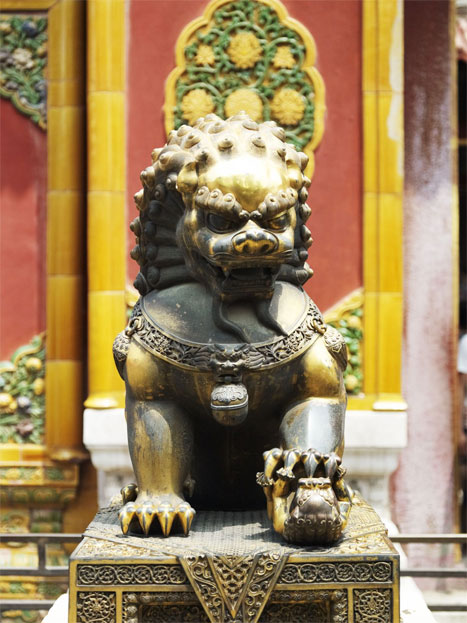
Mythical creatures adorn the building's eaves, including dragons and phoenix. Photo by Mark Read
These days it’s China’s most popular sight and attracts enormous crowds – but even among the throngs, it’s still possible to find secluded corners: tumbledown temples, secret galleries, forgotten chambers, quiet squares. It’s a place of ancient codes and secret symbols. The Forbidden City is also a reminder of a much older Beijing, which long predates the city’s skyscrapers, ring roads and office blocks.
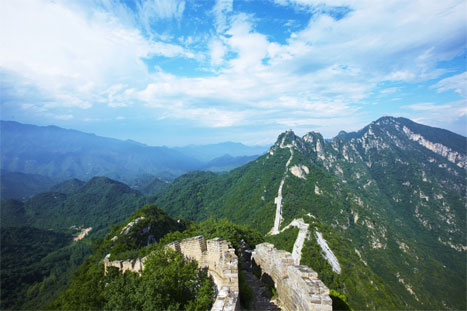
The Great Wall was built to protect the Chinese Empire. Photo by Mark Read
High above the forest canopy, a ribbon of watchtowers and battlements snakes out across the rippled hills, its contours traced out against a fuchsia sky. Stretching for around 5500 miles along China’s wild frontiers, the Great Wall is a potent symbol of the colossal power and iron will once wielded by the Chinese empire. This vast manmade barrier might not be visible from space, as is often claimed, but it is truly one of the great wonders of the ancient world.
In fact, there isn’t really one Great Wall at all, but many. It consists of numerous sections, built and modified by successive military commanders over the course of more than 2000 years. Some parts are little more than pounded earth, mud and timber. Others, such as the Jiankou section, bristle with ramparts, forts and guard towers, often given elaborate names such as The Eagle Flies Facing Upward, Heaven’s Ladder or the Nine-Eye Tower.
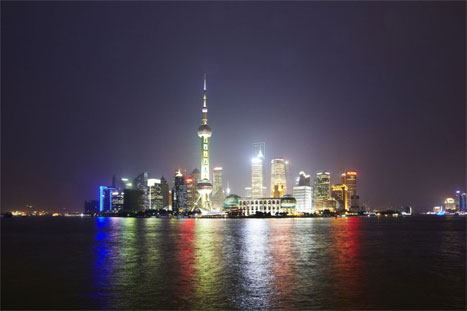
If anywhere symbolises China’s superpower future, it’s Shanghai. Wired by fibre-optics, intersected by neon-lit freeways and bathed in a permanent sodium glow, it’s the archetypal modern metropolis: faster, richer, brasher and busier than any other city in China.
Twenty years ago, the city would barely have scraped into the top 50 in the world skyscraper league, but it’s now at number four – surpassed only by Hong Kong, New York and Tokyo – and rising fast. On the east bank of the River Huangpu, in the high-rise district of Pudong, the pace of change in Shanghai really shifts into focus. In 1990, this was still farm land, carpeted with rice paddies, cornfields, warehouses and boat stores. Two decades later, it’s the city’s priciest patch of real estate, home to the main financial district, the stock exchange and Shanghai’s tallest cluster of skyscrapers, including the gaudy Oriental Pearl Tower, the Gothamesque Jinmao Tower, the soaring Shanghai World Financial Centre and the Shanghai Tower, which will be the world’s second-highest building, at 632m, when it’s due to be completed in 2014.
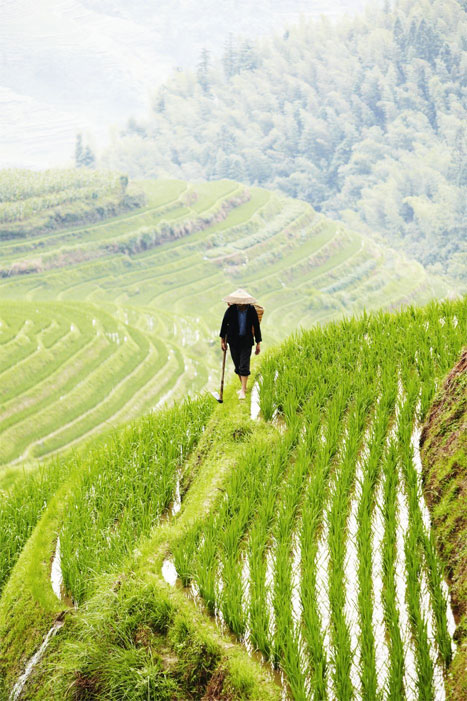
Rice-grower Liao Guozhen surveys his terraces. Photo by Mark Read
Rice isn’t just a staple in China – it’s the stuff of life. Beyond the big cities, in the flatlands that cover much of the country’s interior, every inch of available earth is given over to its cultivation, and the landscape’s colours shift according to the rice season – acid green when the shoots are young, deep jade when the crop is mature, and tawny brown following the annual harvest.
High in the mountains of northern Guangxi stretches the Dragon’s Backbone Rice Terraces, a vast network stacked across the hillsides like the tiers of a wedding cake. Cultivated for more than eight centuries, the rice terraces cover 16 acres and range in altitude from 300m to 1100m.
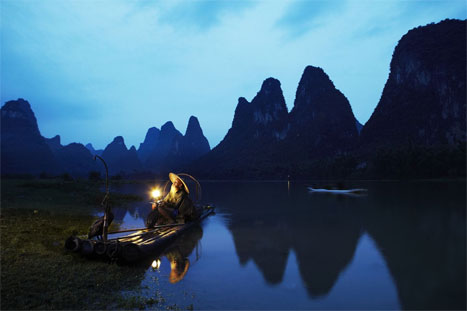
A spiky patchwork of peaks, plains, creeks and canyons, Yangshuo is where China’s city dwellers go when they want to experience the great outdoors. Stretching along the banks of the Yulong and Li rivers, this rural county is home to some of the country’s most famous landscapes – they even feature on the back of the 20 yuan note. Strewn with karst pillars, rural villages and riverside trails, it offers a glimpse of an agrarian past that feels a world away from the clamour of China’s traffic-choked cities.
Before the advent of motorways and high-speed trains, the rivers were often the only means of transportation in rural China and, even now, traditional bamboo rafts are still a common sight along the riverbanks – although these days, they’re more likely to be transporting tourists than trade goods.
Some of the old river ways endure. Cormorant fishing is one such custom – fishermen train the cormorants using loops of throat twine, which allow the birds to guzzle smaller fish but prevent them from eating the larger ones. As recently as the 1950s, there were as many as 500 cormorant fishermen working on the Li River, but now only a handful remain, mainly to stage shows for visitors.